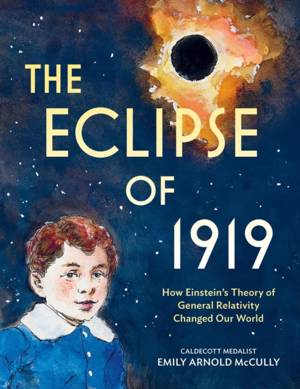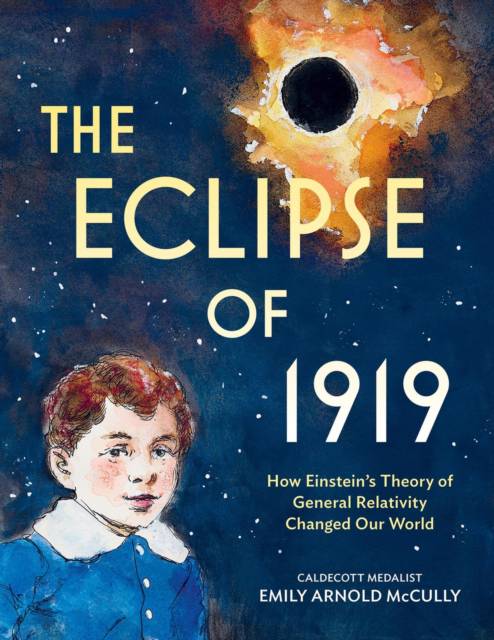
- Afhalen na 1 uur in een winkel met voorraad
- Gratis thuislevering in België vanaf € 30
- Ruim aanbod met 7 miljoen producten
- Afhalen na 1 uur in een winkel met voorraad
- Gratis thuislevering in België vanaf € 30
- Ruim aanbod met 7 miljoen producten
Zoeken
The Eclipse of 1919
How Einstein's Theory of General Relativity Changed Our World
Emily Arnold McCully
Hardcover | Engels
€ 26,45
+ 52 punten
Omschrijving
From his earliest days as a child, Albert Einstein was fascinated with the relationship between light and gravity. He couldn't stop thinking about the laws of the universe, and was determined to describe how motion and time, and energy and mass, all worked together. Einstein imagined gravity as what happens when objects bend the space and time around them. But this theory couldn't be perceived in the everyday world. To test his hypothesis, Einstein needed to see if the sun's gravity bent the light from a nearby star. And the only way to do that was to photograph a total solar eclipse. This is the story of how scientist Arthur Eddington validated Albert Einstein's theory of general relativity, permanently altering the world's understanding of the universe and beyond. It's a testament to the relationship between nature, science, and the pursuit of knowledge.
Specificaties
Betrokkenen
- Auteur(s):
- Uitgeverij:
Inhoud
- Aantal bladzijden:
- 40
- Taal:
- Engels
Eigenschappen
- Productcode (EAN):
- 9780316475525
- Verschijningsdatum:
- 29/07/2025
- Uitvoering:
- Hardcover
- Formaat:
- Prentenboek
- Afmetingen:
- 221 mm x 284 mm
- Gewicht:
- 453 g

Alleen bij Standaard Boekhandel
+ 52 punten op je klantenkaart van Standaard Boekhandel
Beoordelingen
We publiceren alleen reviews die voldoen aan de voorwaarden voor reviews. Bekijk onze voorwaarden voor reviews.








